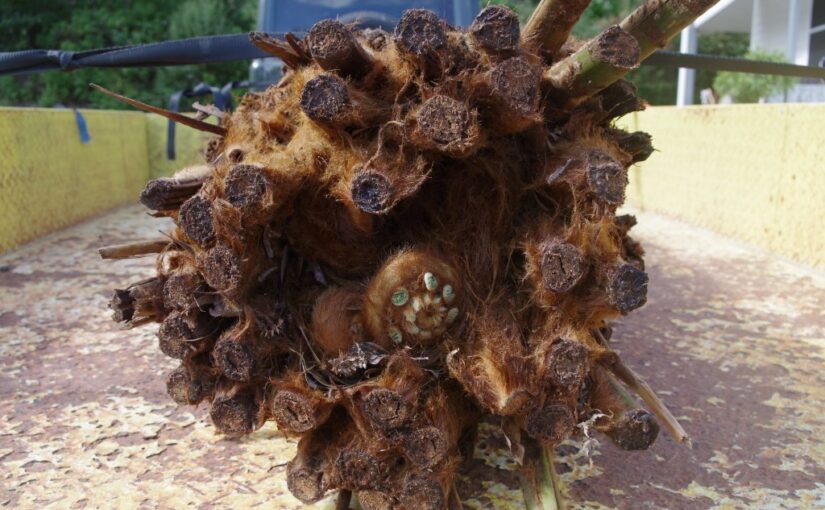The spoken words came from the kitchen: “That was a rookie mistake”. When words are backed up with facts, truth becomes hard to deny. After all, a genuine rookie mistake had been made. At such awkward moments, good grace can be found in the gentle art of acceptance. The laconic reply: “Yeah”, conveyed a sense of embarrassment and a certain level of discomfiture at being caught-out.
The climate here can be very humid for much of the year. Winter days are cold and often hover around freezing for months. People in the big smoke fear the winter climate in this mountainous terrain. I’ve heard old timers quip that if new comers make it through two winters, they might be around for the long haul. Our only fuel for heating is firewood. Given the thousands of trees, there’s plenty of it, that’s for sure. But getting the stuff to burn when the weather is cold and wet, takes a lot of skill and is something of an art form. And I’d just completely stuffed up the fire.
The autumn evenings here are now quite cool. Not yet freezing, but cold enough to slow the ripening of the tomatoes, and you can see that the end of the growing season is nigh. Rain has fallen every day now for almost two weeks. I watched on through the glass door of the firebox with a sense of dismay, as the fire in the wood heater extinguished itself, then sputtered out. Totally my fault. I’d added in a large chunk of firewood before the fire was well established. As I’ve often amusingly said to Sandra when weather conditions are sub-fluffy-optimal, a person must make love to a fire. I’d unfortunately done the equivalent of a fire ‘quick root and boot’, as a young lady so eloquently said on the national youth music broadcaster the other day when discussing the pitfalls of modern dating.
Seems like every year we have to re-learn systems and techniques. And heating with firewood is a very complicated process, from the very beginnings of sourcing the timber to the end product of heat. None of that system can be rushed either. Firewood – if you decide to undertake the challenge of creating it – has to be seasoned for at least a year, with two years being optimal. All seasoning means, is leaving the stuff out in the weather so that the moisture content reduces and the sugars break down. Unseasoned firewood doesn’t burn. And long before winter days, enough of it has to be stored out of the weather so that it’s dry when you need it.
Get that process right, even with dry seasoned firewood, you’ll probably stuff up the first couple of fires of each year. It doesn’t matter though. At that time of year, it’s cold, but not that cold. Easily fixed and the memories come flooding back. By July though, in the depths of winter, it is that cold! Stuff those fires up, and you’ll begin to regret the wasted time whilst enjoying the benefits of a smoky house. Not fun.
Ignored past lessons have been on my mind this week. The previous week, we’d begun work on the drainage basin. For many years, I’d been observing how the water flows down the driveway and away from the house. During heavy storms, a whole lot of water can concentrate and flow down past the Meyer lemon away from the house, then into the shady orchard. The original arrangement coped with storms, but could have worked better. There was also the desire to further capture, slow and use some of the water. But most importantly, there was the fern potential.
So last week we’d dug the drainage basin, and as part of those works we moved fourteen bonkers huge rocks. I’d had a vague memory that in the past I set an upper limit of moving six bonkers large rocks in a day. Yeah whatever, was how my mind considered the warning on that day! Turns out that the limit was a good idea, because moving fourteen large rocks in one day is a bad idea. Still, no permanent harm was done, and the project was beginning to look good.
We’ve been working on this property for a bit less than a third of my life, and sometimes I do wonder if people growing up in these sorts of surroundings would have a better developed sense of how things work, and what is possible? But then, the alternative thought is that such people may not be able to envisage a rock lined drainage basin planted out with ferns. I see no reason why infrastructure should not also be aesthetically pleasing, whereas others may prefer the more functional concrete pit and drain. Which is the more correct, it’s hard to know.
The long term forecast for autumn in this corner of the world was for dry and warm weather. That didn’t happen, and rain has fallen every day for at least a fortnight. A decision was made to get a large four cubic metre (five cubic yards) load of the crushed rock with lime delivered. The material makes for excellent all weather surfaces.
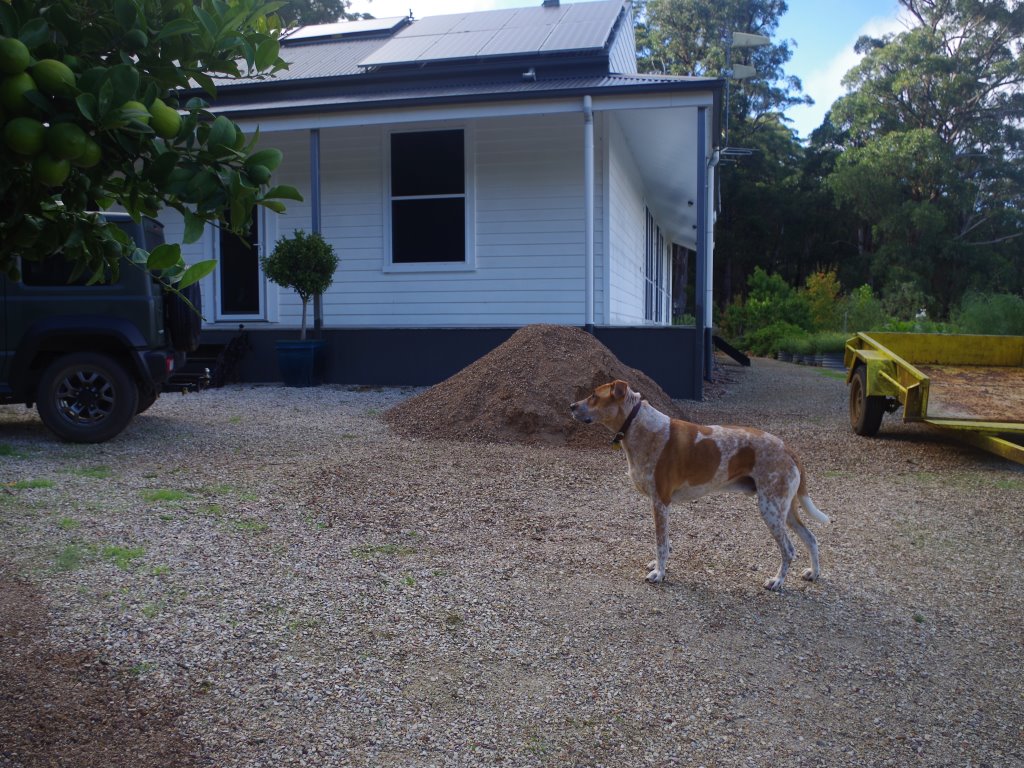
Diesel fuel is a wonderful thing. That much crushed rock would have taken about sixteen trailer loads, and a whole bunch of driving. Delivery in this case is a far better option. With rain yet again in the forecast, earlier in the week we placed crushed rock on the new low gradient path:
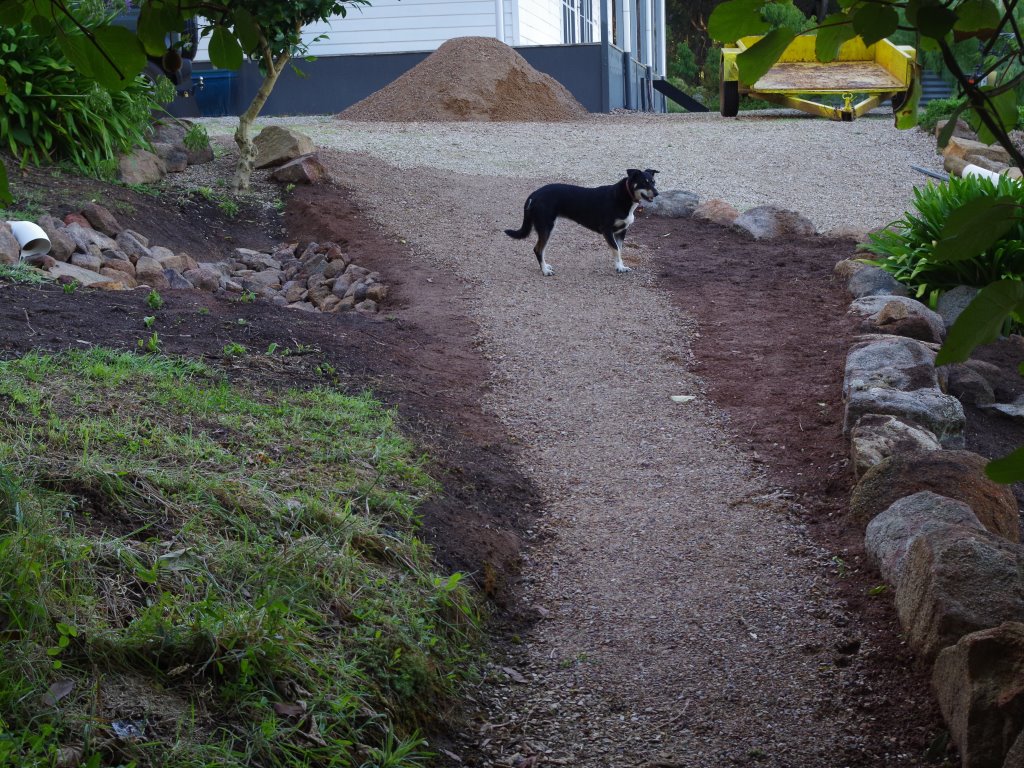
Also on the recently excavated flat site in front of the long shed:

Time was in short supply this week, and so we focused on ensuring that we could use the surfaces in very wet weather, rather than completing the task.
On Sunday, we visited a specialist fern nursery (Fern Acres) at Kinglake West, which is in a nearby mountain range. The business has been there for many years, and as you’d imagine, they specialise in ferns. Tree ferns have been in short supply recently due to the wet couple of years in this corner of the continent. Fortunately, the nursery had recently obtained a supply of them, so we picked up a five foot tree fern.
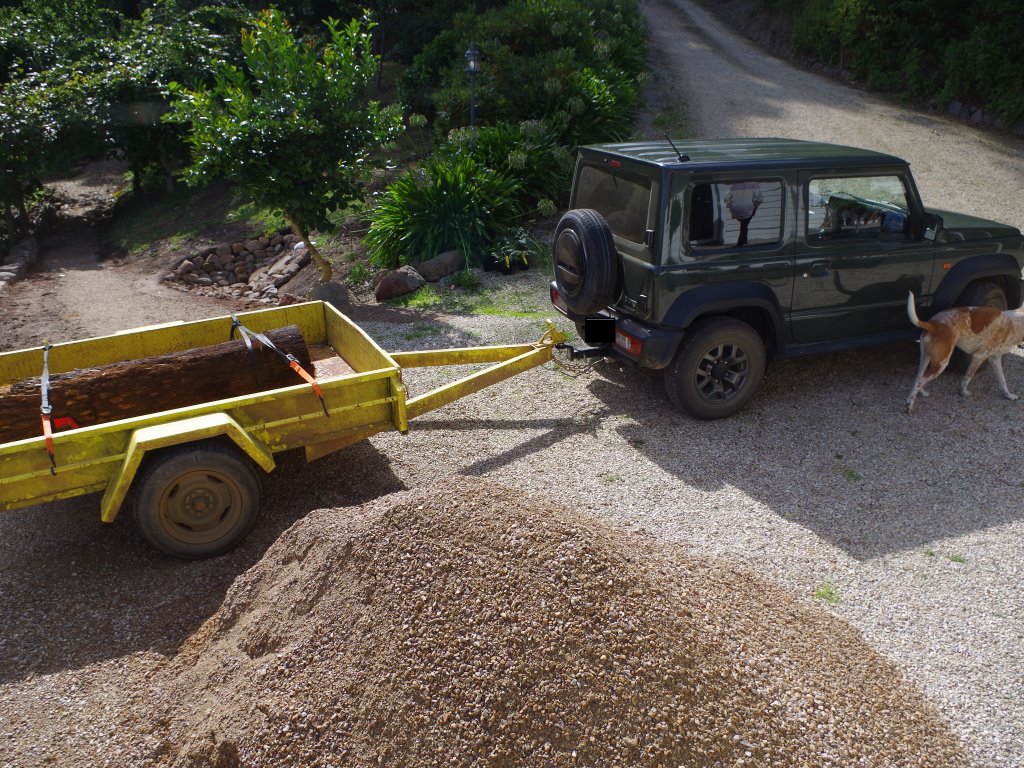
The plant is enormous, and is certainly the heaviest plant we have ever had to relocate. I’ve moved logs which were lighter than that damp and dense beast of a plant. The nursery can supply them up to ten feet, but such plants are beyond our skills to move.
During transport of the tree fern, the crown of the plant faced the rear so that the wind did not dry it out. Several new fronds can be seen developing in the crown of our new tree fern.
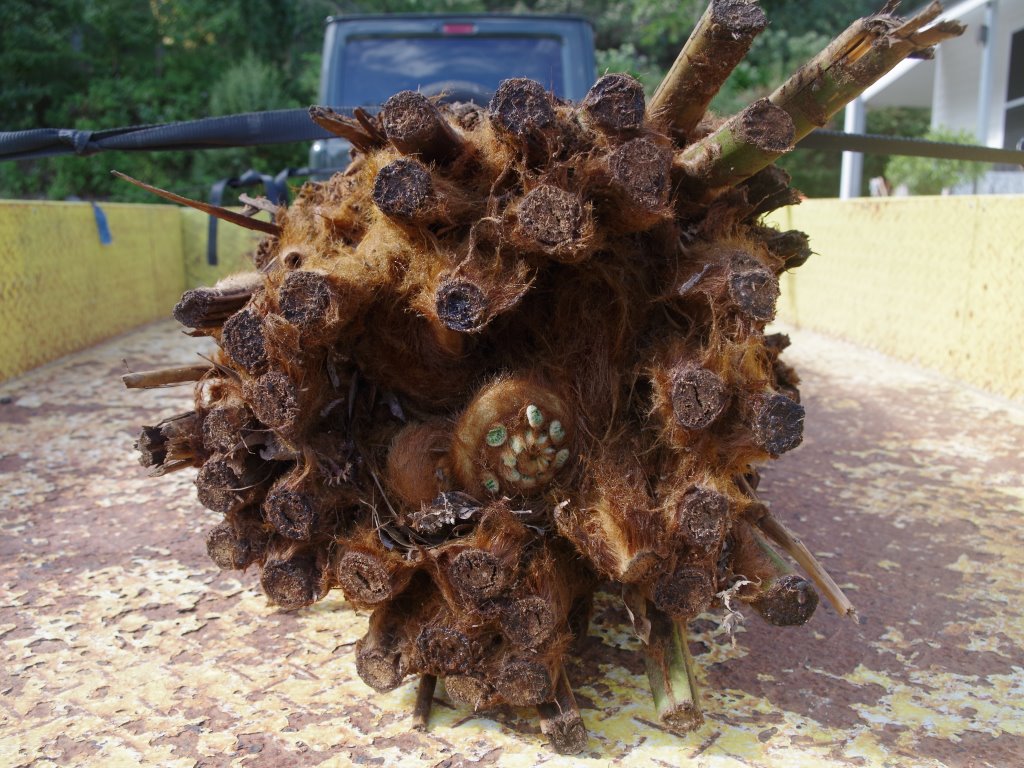
By late afternoon, the tree fern was planted in the drainage basin.
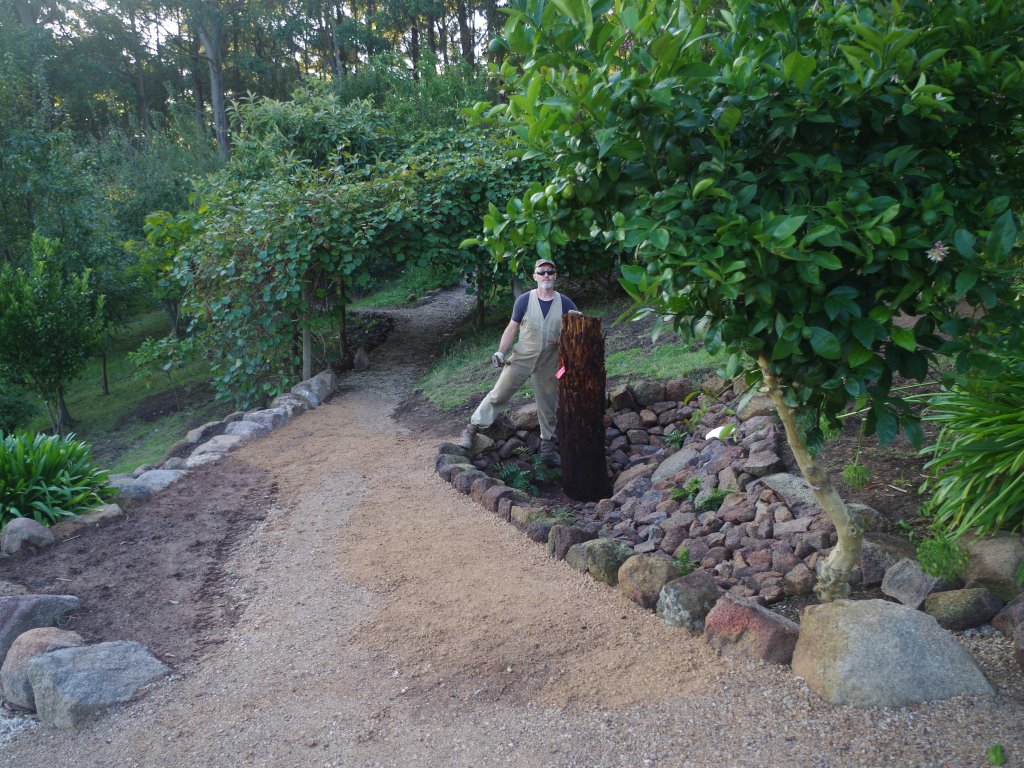
Observant readers will note in the above photo that in amongst the rocks in the drainage basin there are several patches of green. These are smaller ferns of different varieties.
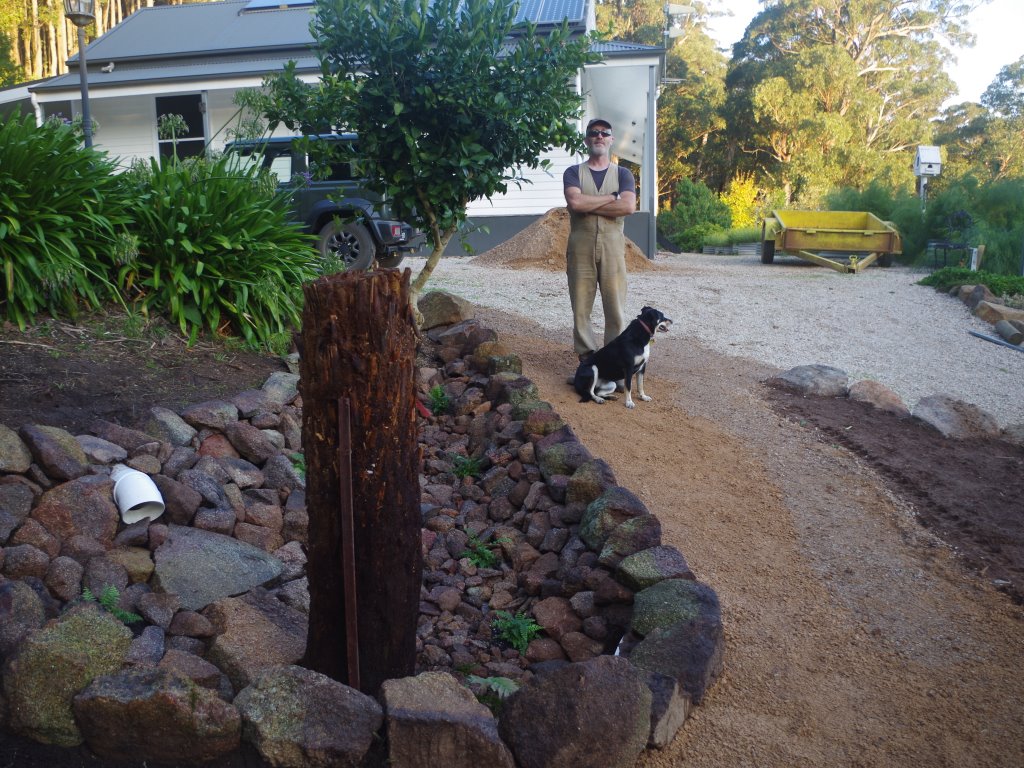
At this time of year, the Seymour Alternative Farming Expo is held. It’s such a fun day, and we purchased five new chickens from the poultry group who have a pavilion there.
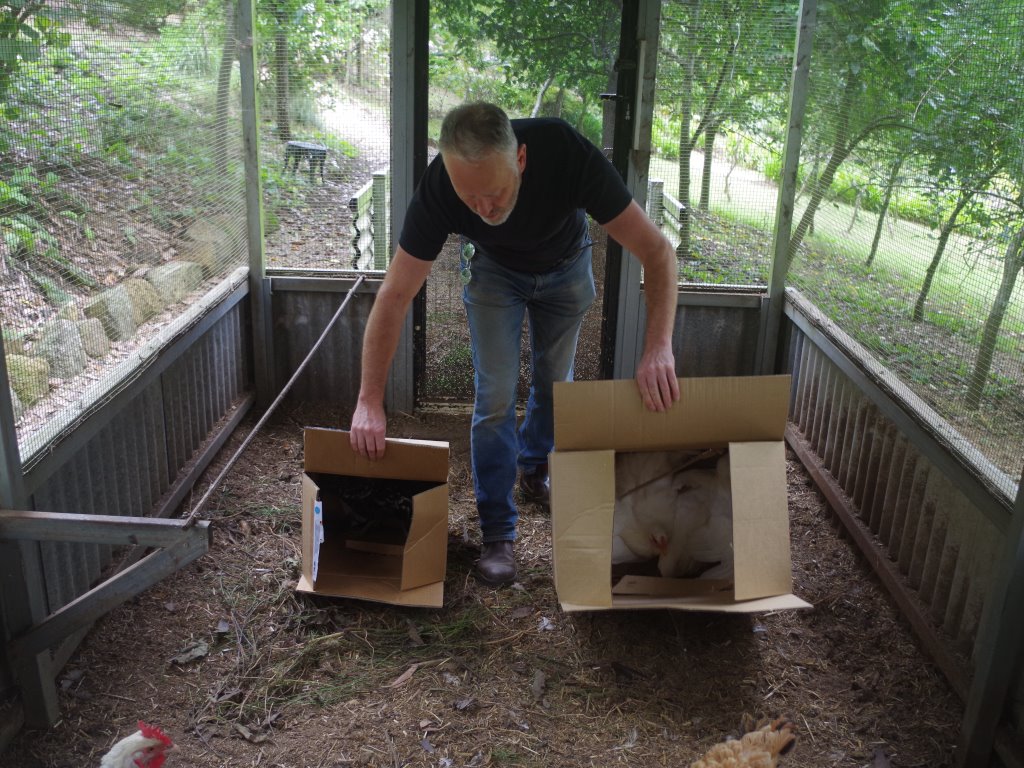
There are probably nicer ways to introduce new chickens to an existing flock, but from my experience chickens just aren’t very nice, even under the best conditions. They just have to sort their business out, and mostly they do.

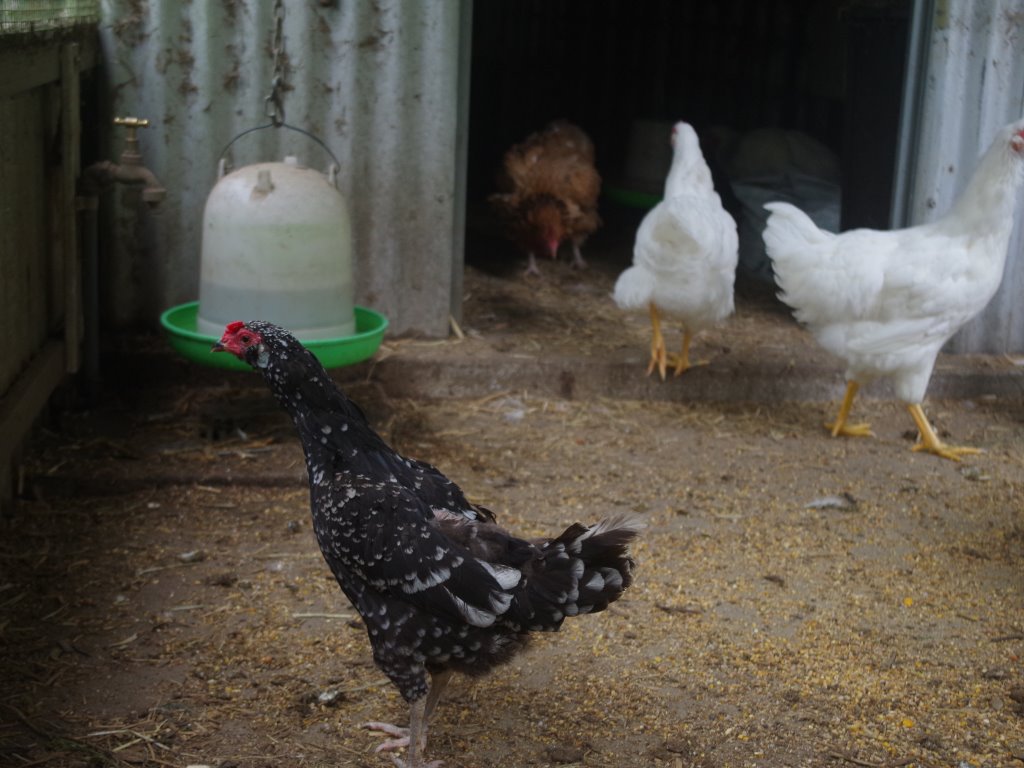
The two Kelpie’s are obsessed with the chickens, and they like to keep a close watch upon them.
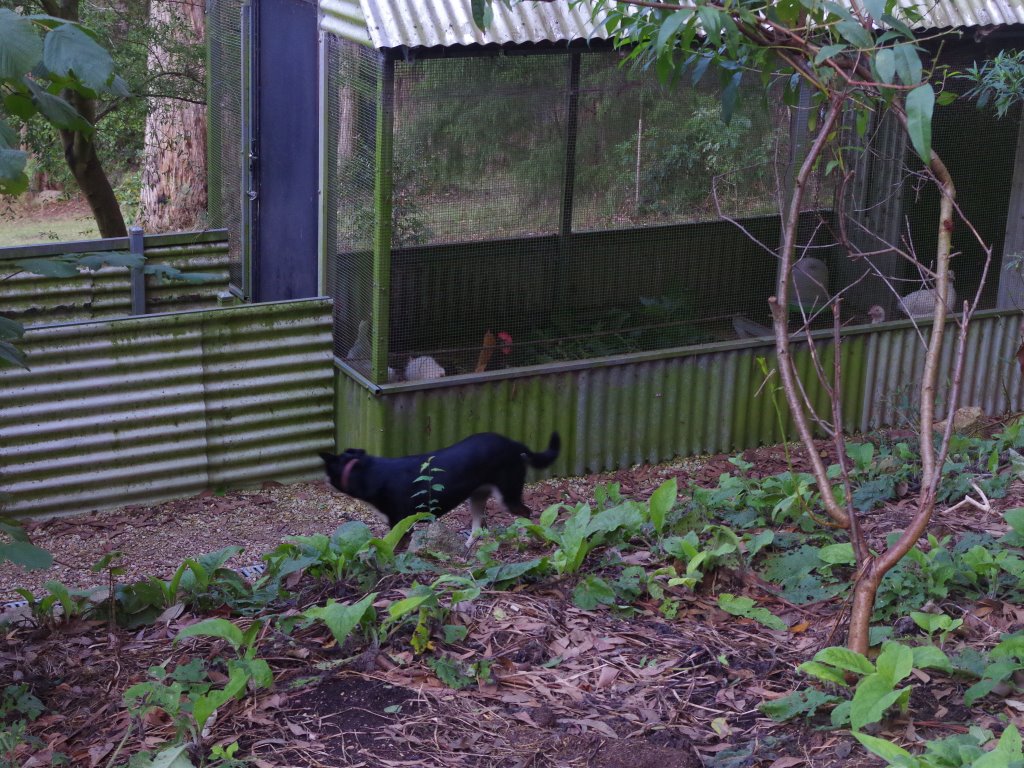
We’ve begun clearing the summer greens out of the many raised garden beds. The removed summer greens get fed to the chickens. In a few weeks we’ll hopefully plant out the winter greens.

Feeding the fruit trees continues right through the winter. Not all of the fruit trees go deciduous, the citrus for one example, and they benefit from the soil feed. Recently I’ve been mixing up coffee grounds + blood and bone meal + agricultural lime. The trees have been responding well to the feed.
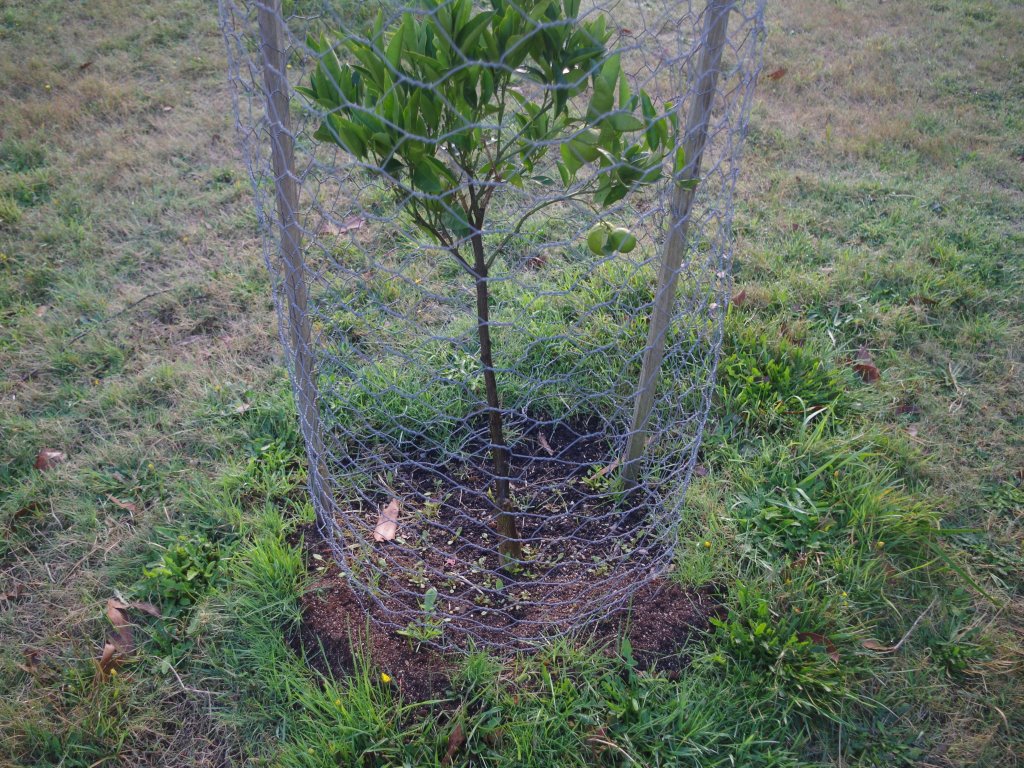
We’ve begun the process of harvesting the pumpkins. There are a lot of them and they store well up until about early to mid-spring. At that time, they turn to moosh, that’s the technical description for a very big mess.

With the return of the rain and cooler weather, the grasses and other surface plants are beginning to grow.

Onto the flowers:
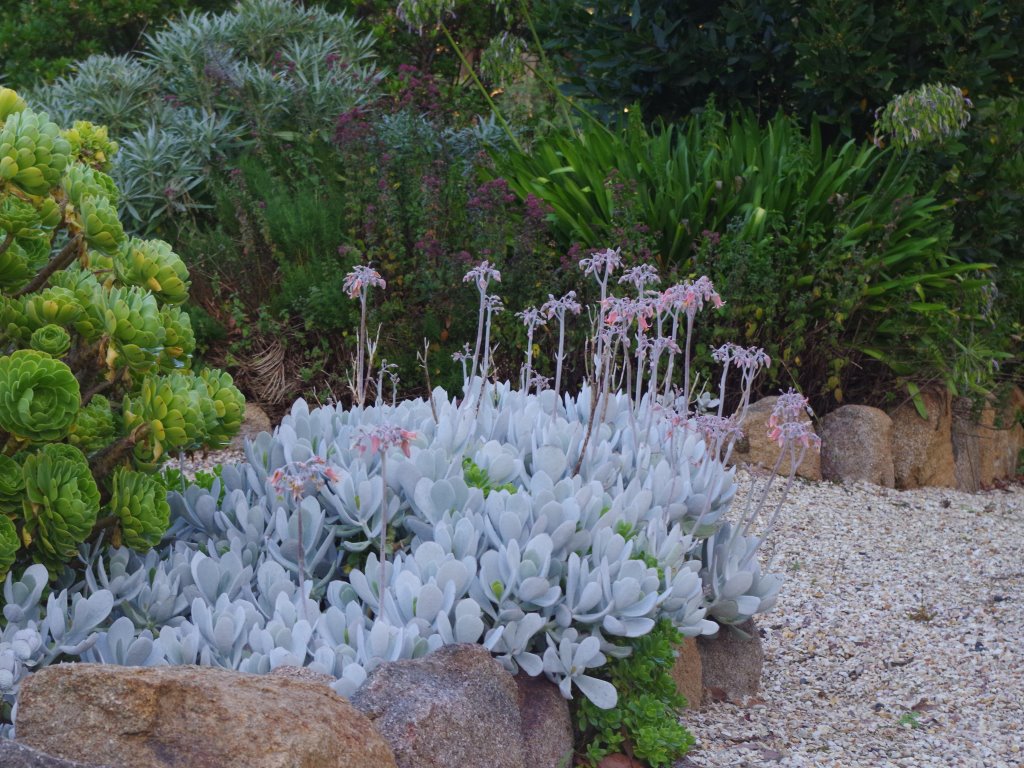

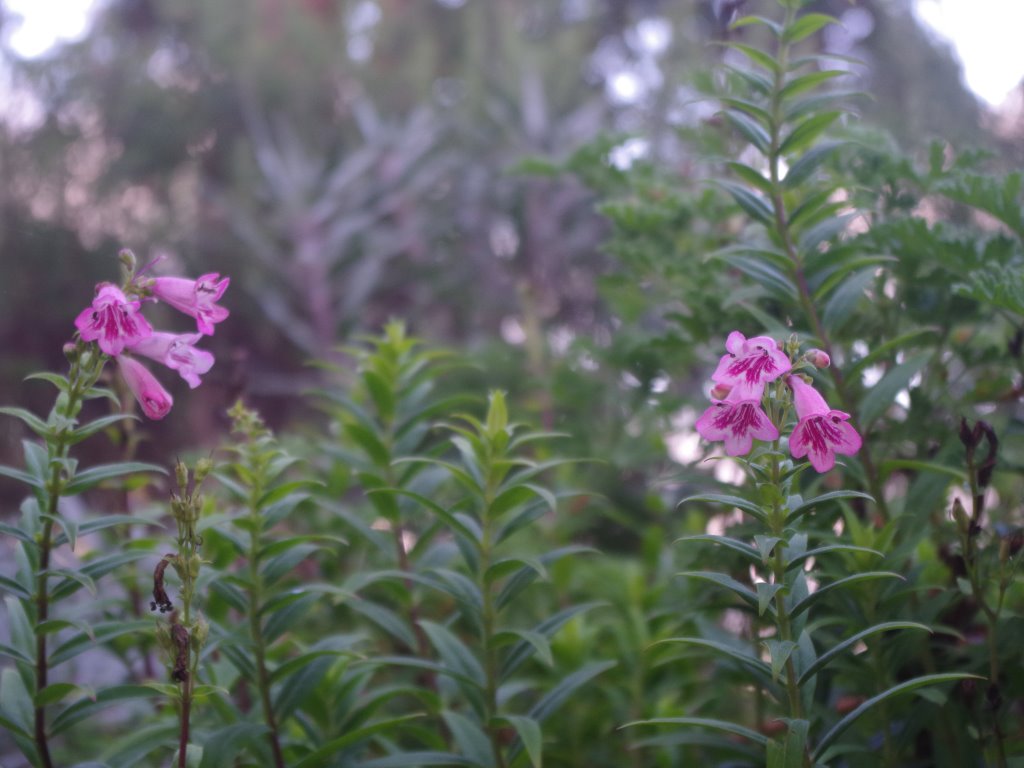
The temperature outside now at about 9am is 11’C (52’F). So far this year there has been 157.6mm (6.2 inches) which is up from last weeks total of 123.2mm (4.9 inches)
